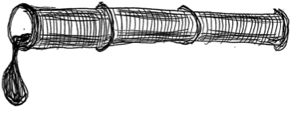November 1, 2016
by Roger Downs, Conservation Director
Over the past four years, the Sierra Club, along with our partners, has been fighting the mass transportation of crude oil through New York State via railcars, oil barges, tar-sands delivery infrastructure and pipelines. While the fight has largely centered on the Port of Albany, where North Dakota Bakken crude is transferred from railcars to river barges — the impact of this dangerous oil transport has been felt in almost every major city in upstate NY and along some of the state’s most important waterways.
What has made this campaign especially difficult is the primacy that the petroleum industry and railroads have enjoyed over state and local laws, stymying public efforts to protect our communities from derailments, spills and catastrophic explosions — like the explosion and firestorm in Lac-Mégantic, Quebec, that killed forty-seven people and leveled an entire downtown area.
This tragedy should have inspired a wave of meaningful prohibitions and reforms to the crude-by-rail industry, whose cargos have the volatility of gasoline, and whose tankers have a propensity to derail and rupture. But we’ve seen instead an unrelenting expansion of crude oil transport across the continent despite thousands of local, individual efforts to stop it.
Two recent regulatory rulings, however, have challenged longstanding claims of preemption by the crude-by-rail industry, giving city governments and state regulators new hope in constraining an industry that threatens both public safety and our fragile climate. For years, the citizens of Benicia, California, were told they had no authority to stop a new crude-by-rail transloading facility because of the preemptive nature of federal railroad law. On September 28, 2016, the city voted to deny its construction.
But a little-known agency, the Federal Surface Transportation Board, ruled on the same day that the transloading facility — in spite of having railroad tracks — was not subject to federal interstate commerce regulations that preempt cities from denying or approving rail-related projects.
Also in September, the New York State Department of Environmental Conservation (DEC), in a surprise ruling, declared that it would not consider reissuing expired Title V air permits for Albany’s rail-to-barge crude oil transloading operation at the Global Partners facility until there is an aggressive environmental review detailing the risks to the community and the climate.
When the original permits were issued in 2012 for the Global facility, the DEC observed that its regulatory hands were tied due to the preemptive rights of the railroads, and that the scope of what the state could control was extremely limited. With the new ruling from the Surface Transportation Board, it would appear that the DEC and the City of Albany will now have greater leverage to limit the impact of the facility — or close it outright. While the Port of Albany is a central hub of crude oil distribution through NY, there are other parts of crude oil transport that could persist — even if operations are curtailed at Global.
The new DEC permitting requirements for Global indicate a greater emphasis on cumulative impacts, giving us hope that, for the first time, we’ll get a handle on the collective impact that all these projects present — and limit or stop their advancement, understanding them to be one larger entity.
Oil Infrastructure Risks to New York

Crude by Rail through NY
The threat: Dangerous and poorly designed rail tankers — “bomb” trains — transport millions of gallons of fracked crude oil from the Bakken Fields of North Dakota through Buffalo to Albany and along the Hudson River to NJ refineries, using the CSX line. Bakken crude is also transported in railcars from eastern Canada to Albany, NY, on the Canadian Pacific line, endangering the waters of Lake Champlain and the Upper Hudson River. Dozens of derailments over the past four years have seen catastrophic explosions, millions of gallons of crude spilled into America’s waterways and billions of dollars in cleanup costs.
The opportunity: Federal preemption has largely stymied local efforts to stop this dangerous flow of crude. As long as there’s no end point, like a refinery or a transloading facility, communities in the path of this “virtual pipeline on rails” have little recourse in the face of long-standing preemption by federal railroad law.
Recent reforms by federal regulators have been anemic and follow an unrealistically slow implementation timeline. But there are opportunities to rein in the industry by enforcing requirements for adequate insurance to cover catastrophic accidents, enhanced state inspection of crumbling rail infrastructure and continuing pressure on Congress and the Obama administration to enact meaningful reform.

Pilgrim Pipelines
The threat: This proposed twin oil pipeline is designed to move crude oil from the Port of Albany to refineries in NJ using the NYS Thruway corridor as its primary route. Refined product, like gasoline and diesel, would return to Albany on a parallel pipeline. The route will span nearly 170 miles and bisect dozens of communities. The pipes will also disrupt approximately 9.2 linear miles of wetlands and 257 surface water bodies along the entire route, resulting in extensive impacts to water quality and natural resources.
Modern crude-oil pipelines have demonstrated a risk for catastrophic spills equal to their railroad counterparts. In spite of the narrative that the pipelines will displace crude-by-rail and barge traffic — filling the pipeline will require nearly double the number of “bomb” trains currently traveling to Albany.
The opportunity: In September 2016, the NYSDEC issued a Positive Declaration of Environmental Significance, which begins an exhaustive scoping process. The public and agency experts are asked to weigh in on how the proposal will impact air quality, water purity, public health and safety, biodiversity and our global climate. Villages and cities in the pipeline path will have veto power over the pipeline’s construction and will play a key role in scoping. Public comment hearing schedules have yet to be announced, but early outreach to the DEC and civic involvement in the process will be essential to exposing the dangers of this ill-conceived project. Stay tuned.

Port of Albany Crude Oil Transloading Facility
The threat: Since 2012, two companies, Global Partners and Buckeye, have received permits to transload 2.8 billion gallons per year of fracked crude oil from rail to barge at the Port of Albany. This dramatic increase in crude oil shipments has degraded local air quality and endangered environmental justice communities living within mere feet of the facility. This has made Albany a global epicenter for crude oil transport.
The opportunity: The Title V air permit that the NYSDEC granted to Global Partners in 2012 to transload 1.8 billion gallons per year of crude oil has expired. But instead of the usual rubber-stamp permit renewal, the NYSDEC is requiring Global Partners to submit a new air permit application that will be subject to a full environmental review under the State Environmental Quality Review Act (SEQRA). Part of the strength of this review is that it will require an analysis of cumulative impacts and require Global to consider the collective damage to the environment caused by the proposed Pilgrim pipeline, tar-sands boiler facility and the Buckeye transloading facility.
Recent DEC air-monitoring programs, EPA investigations and our own analysis have demonstrated that the current flow of crude through the port violates air quality standards with elevated levels of carcinogenic benzene. Multiple public engagement opportunities and hearings for this permit are on the horizon, representing the best opportunity in years to shut down crude-by-rail coming from the north and oil barge traffic on the Hudson River with a definitive denial from the DEC.

Tar Sands Boiler Facility at Port of Albany
The threat: In 2013, Global Partners LLC applied to the NYSDEC for a Title V air permit to build a seven-unit boiler system at the Port of Albany to heat and reduce the viscosity of heavy crude brought by railcars. Because the relatively light crude coming from North Dakota has already been able to pass through Albany in winter, it’s assumed that this application is meant to facilitate heavy tar-sands oil (bitumen) that originates in Alberta, Canada, and requires heat treatment or dilution to transfer from railcar to barge.
Tar-sands oil, when spilled into water, is virtually impossible to clean up because it sinks and slowly oozes as a hazardous plume into the water, rather than floating on the surface like other hydrocarbons. The boilers and off-gassing shipments of tar-sands oil would only further exacerbate the poor air quality already present in the high-density neighborhoods surrounding the port.
The opportunity: The Sierra Club and partners sued the DEC for issuing a negative declaration of environmental significance for the project — which shielded it from environmental review — and played a significant role in the DEC’s reversal of that decision. The fate of this facility remains in the courts, but with a new focus from the DEC on environmental justice, climate change and air-quality impacts, the facility has an uphill battle to get permitted. Continued public pressure will be key to ensuring that the transport of the dirtiest fuel on earth is not facilitated by the Port of Albany or the DEC permitting system.

Expansion of Oil Barge Anchorage in the Hudson River
The threat: While the Hudson River has for centuries been used to transport goods by barge, including petroleum products, there has never been such a concentrated effort to use the river for crude oil throughput from its North Dakota source to global refineries. The lifting of the Crude Oil Export Ban has only increased the significant traffic of crude oil barges on the Hudson.
A proposal currently before the Coast Guard would allow 43 new anchorages for massive ships and barges — from Kingston to Yonkers — for crude oil to be stored on the Hudson while vessels wait for space at refineries and transloading facilities. This expanded congestion of anchorages will endanger the river with an increase in spills, despoil the scenic beauty of the river and threaten the survival of critical species, like the Atlantic sturgeon.
The opportunity: Significant public opposition to the anchorage proposal is mounting in riverside communities up and down the Hudson. There is an open public comment period before the US Coast Guard that ends December 6. To submit comments, you must use this USGS online open docket: https://www.regulations.gov/comment?D=USCG-2016-0132-0001